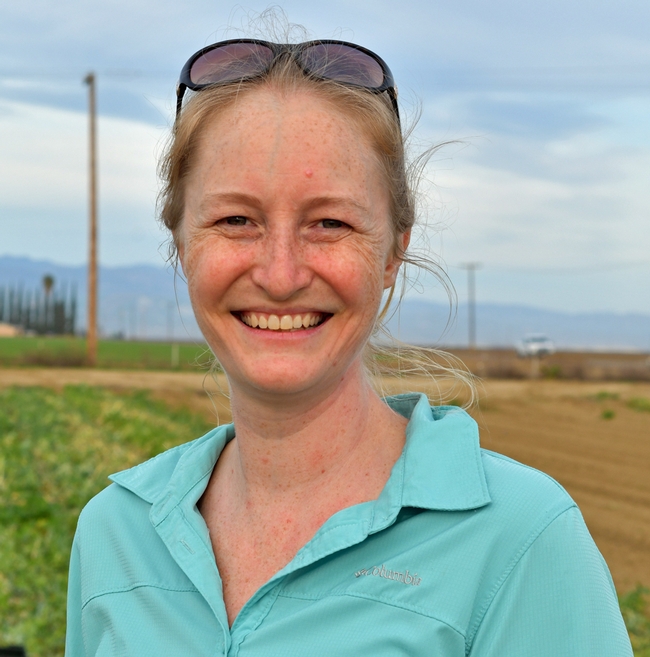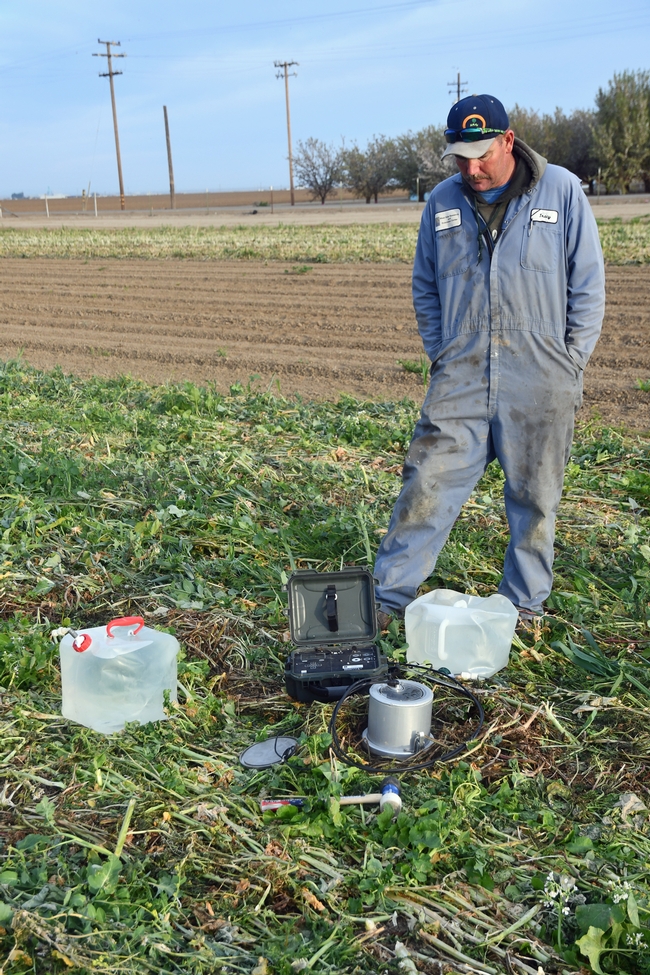
The West Side research plots are one of 120 locations in Canada, the United States and Mexico where the SHI scientists are collecting data to evaluate soil health indicators at a continental scale.
The initiative will identify acceptable soil health measurements and standards, as well as launch a comprehensive evaluation program that relates soil health to productivity, economic and environmental outcomes. Cappellazzi is project scientist for the Western U.S. and coordinates the soil health team's pastures and rangeland research.
“Our project at West Side started in 1999 and is a unique research resource in California because of its dedication to reduced soil disturbance and soil biodiversity in food production systems,” said Jeff Mitchell, UC Cooperative Extension specialist and leader of UC's Conservation Agriculture Systems Innovation.
Since it was established, the research plots have been managed in an annual rotation of cotton, processing tomatoes and more recently sorghum, garbanzo beans and melons, under four different treatments: no-tilled plus cover crops, no-tilled with no cover crops, conventionally tilled with cover crops and conventionally tilled without cover crops.
“There are few long-term study sites in California where this combination of core principles that underlie soil health have been applied for a long time frame like we have here at the West Side REC,” Mitchell said. “These principles include reducing disturbance of the soil, maintaining cover over the soil through the use of residues and cover crops, and accentuating diversity in crops and soil biology.”

“Our research project at the West Side REC has enabled scientists to reach many conclusions about soil health in the past. But this very exhaustive sampling by the Soil Health Institute is perhaps the most comprehensive battery of tests that have ever been performed on any study site in the San Joaquin Valley to date,” Mitchell said.
The research initiative is funded with a $9.4 million grant to the Soil Health Institute, the Soil Health Partnership and the Nature Conservancy to improve soil health and support positive economic and environmental outcomes for American farmers and ranchers.
The goal of this project is to support research and education that accelerates adoption and benefits of soil health management systems nationally. Farming practices that improve soil health can increase profitability while protecting natural resources like air and water for communities.
For more information about the sample collection process at the West Side REC, view a 14-minute video at https://youtu.be/WSNg6rJdvvE